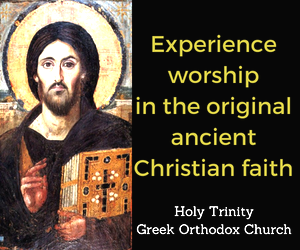India Is One Step Closer to a Hindu Theocracy
Commentary by Nick Gier | FāVS News
“Today our Lord Ram has come.
After centuries of waiting, our Ram has arrived.”
—Indian Prime Minister Narendra Modi, Jan. 22, 2024
“These Muslims should be killed.”
—Hindu nationalist leader
In 1954, A. L. Basham wrote “The Wonder That Was India,” and after a year and a half studying and traveling in this amazing country, I planned to write a follow-up: “The Wonder That Was and Still is India.” However, after experiencing the rise of Hindu nationalism and its goal to erode India’s rich multiethnic and religiously plural foundations, I am despondent.
In 1992, I was on sabbatical leave in India, where I was researching my book on Gandhi at Punjab University. One day, six graduate students (four Hindus and two Sikhs) in the Department of Gandhian Studies invited me to accompany them on their weekly service project.
On Dec. 6, we drove out to a Muslim village where these students taught Hindi or English to any child who wished to learn. Their mosque appeared to be in disrepair, but there was a beautiful temple where the Hindu priests prepared a daily meal of rice and curry for any hungry villager.
One More Day of Infamy
As we drove back to the university, I thought to myself: “This is Gandhi’s vision of India, where Hindus (1.1 billion), Muslims (210 million), Christians (32 million), Sikhs (24 million) and Buddhists (10 million) have lived together in relative peace for centuries.” But, as I entered the TV room at the hostel, I was shocked to see thousands of Hindu fanatics tearing down — hammers, pickaxes and bare hands— the Babri Mosque in the city of Ayodhya.
A crowd of 200,000 had gathered to cheer, and the police stood by and did nothing. The militants were chanting anti-Muslim slogans and promised that they would replace all Indian mosques with Hindu temples. Although the magnificent Taj Mahal is not a mosque (it’s a mausoleum), it, too, was on their list.
The militants claimed that the 16th century mosque, considered a masterpiece of Mughal architecture, had been built on the birthplace of the Hindu god Ram. Over the next several months riots broke out all over India and 2,000 were killed — mostly Muslims. For millions of Indians who hold their country’s diversity dear, Dec. 6, 1992, has become one more day of infamy.
Worshipping the Same God
In 2019, India’s Supreme Court ruled unanimously that the destruction of the mosque was “an egregious violation of law.” They instructed authorities to find land for a replacement mosque. Appeasing Hindu nationalists, the justices also ordered that a new Ram temple be built on the original site.
On Jan. 22, Hindu nationalist Prime Minister Narendra Modi, acting as a Hindu priest, led the rituals to consecrate the new Ram temple. However, the five acres the court set aside for the replacement mosque is still vacant.
The Mughal emperors (1526-1761) appointed Hindus to high places of authority and Mughal armies were a blend of Muslim and Hindu soldiers. Emperor Akbar the Great interacted with numerous scholars and he concluded that all religious devotees worshipped the same God.
In my book on religious violence in Asia, one of my conclusions was that it was Christian missionaries who persuaded Hindus and Buddhists in South Asia to accept the toxic concept of a one true religion. Hindu, Muslim, Buddhist and Christian fundamentalisms and their sometimes-violent consequences have been the tragic result.
Radicalism, Fundamentalism and Hyper-nationalism
More Muslims live in India than any Muslim majority country, except for Indonesia and Pakistan. Virtually all of them have rejected radical Islam, and they want to live in peace with their Hindu neighbors. Thousands of Indian Muslims marched to protest the attack by Pakistani jihadists who, in November 2008, killed 166 people in Mumbai.
Modi and former President Donald Trump are hyper-nationalists and Islamophobes. Both push fear-driven campaigns based on historical grievances and aversion to foreign religions and ethnicities. A militant Hindu monk has been elected to lead India’s largest state, and he is rabidly anti-Muslim.
Every morning Mahatma Gandhi led his disciples in a prayer to Lord Ram, but these devotions also included citations from Christian, Sikh and Muslim scripture. He and the Buddhist B. R. Ambedkar, who wrote the Indian constitution, would have turned in their graves at the sight of Hindu fanatics tearing down any place of worship.
The views expressed in this opinion column are those of the author and do not necessarily reflect the views of FāVS News. FāVS News values diverse perspectives and thoughtful analysis on matters of faith and spirituality.






